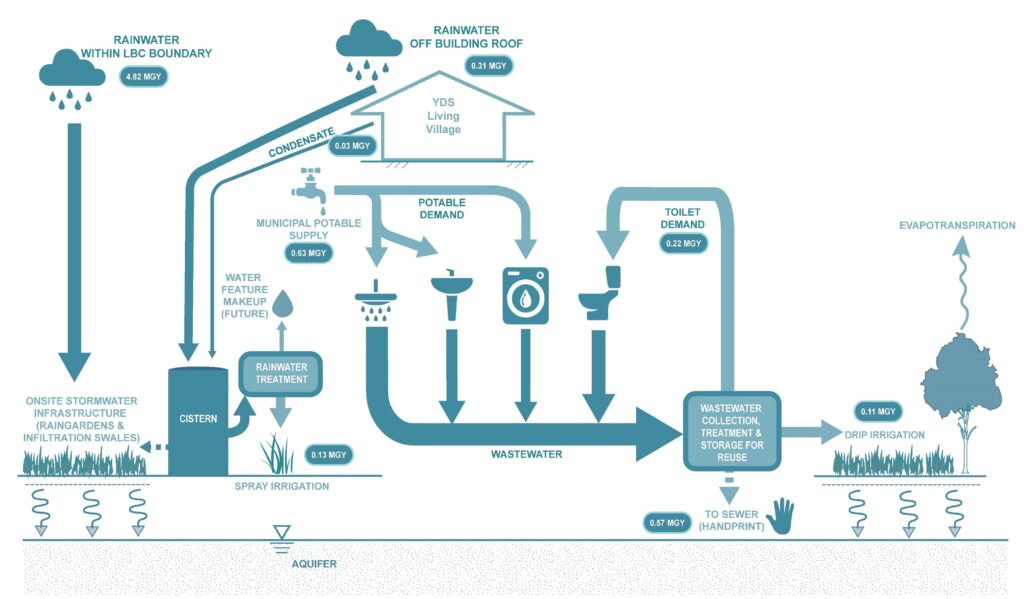The Water Commons invites one into contact with natural water habitat. As it cleanses wastewater for healthy reuse, this system contributes to ecological regeneration and enhances the health of the watershed for the benefit of the greater New Haven community.
By making this cycle visible, the Commons becomes an educational space for ecotheological praxis, sparking curiosity about how we can creatively engage water for the benefit of both humans and ecology. This “living laboratory” demonstrates how humans can actively contribute to a flourishing future in which resources are honored and continually renewed.
The Water Commons is a profound testament to Yale Divinity School’s dedication to ecological regeneration. It physically embodies the ethos of treating water as a sacred resource to be cherished and safeguarded. The natural purification of wastewater through living systems offers a powerful metaphor for renewal, transforming what is typically discarded into a source of renewed life.
Requisite Petals: Water, Place, Health & Happiness, Materials, Beauty, Equity

Rainwater Capture
Rainwater from the roof is captured and stored in two 10,000 gallon cisterns, buried below grade is treated then reused for spray irrigation and resident laundry.

Waste Water Reuse: System Details
Wastewater from the building flows by gravity to primary treatment tanks, then passes through trickling filters for further removal of organic matter and conversion of ammonia. After clarification, the water moves through a vertical- flow constructed wetland for additional treatment, then is filtered, disinfected, and stored for reuse in toilet flushing and drip irrigation. Any surplus treated water is discharged to the sanitary sewer, with controls and odor treatment managed in the water treatment room.

Storm Water Management: System Details
Stormwater is treated and managed onsite through rainwater harvesting for reuse, surface stormwater features, porous pavement in the vehicular areas with subsurface storage, subsurface infiltration systems below walkways, and imported highly permeable landscape soils.


You must be logged in to post a comment.